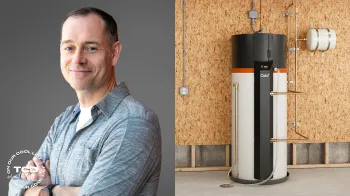A small team of researchers from Washington State University found a way to detect salt in vitrified nuclear waste melters, improving waste management safety.
The scientists combined millimeter wave technology with terahertz radiometry. The technology can detect minuscule quantities of salt in nuclear waste melters. WSU Insider reported on this impressive advancement. The study was published in the journal Measurement.
Why is this an incredible achievement? It's a complex process that is good for humans and the environment.
Nuclear waste sounds terrifying, and it can be if not properly managed. According to the World Nuclear Association, only 3% of all nuclear waste is "high-level waste." This means it's particularly dangerous. It contains 95% of the radioactivity from all nuclear waste. Most of this waste is nuclear fuel.
Vitrification is an effective way of disposing of and storing this high-level waste. It turns the waste into glass. Vitrification locks in the radioactive elements, preventing radioactive leaks, which can harm the environment.
During vitrification, chloride and fluoride salts can form. Because salt dissolves in water, it compromises the glass. If it's exposed to water during storage, salt in the glass causes leaks. The WSU scientists discovered a way to identify salt formations during the vitrification.
By finding these salt formations early, waste management sites can enhance cleanup technology and reduce contamination risks. The vitrification process occurs in large melters, which achieve high temperatures.
John Bussey, one of the study's lead authors, explained that this new technology means "the melters could be monitored to know if we should change what is being put in the melt."
The researchers hope to utilize this new technique at the Hanford Site, which was used to create plutonium for the first nuclear bomb. The nuclear waste there is highly complex, raising the likelihood of salt formations.
|
Would you feel safe living in a home that was built in less than a day? Click your choice to see results and speak your mind. |
Ian Wells, another lead author of the study, explained how comparing different melts helped pinpoint troubling changes. "We can clearly identify what is happening based on that behavior," he said.
The monitoring technique means melters showing signs of salt can be adjusted before the salt forms. "We were surprised by how sensitive a probe it was even with very small amounts of salt," Wells told WSU Insider. The monitoring technique's effectiveness is extremely promising.
This is excellent news, as it means nuclear waste can be managed more safely. Nuclear energy is one of the cleanest forms of energy. It causes no pollution or heat-trapping gas pollution. This salt-detecting technology only makes nuclear power a more viable alternative to dirty fuels.
Nuclear energy is also cheaper than coal or gas. A shift toward nuclear power would mean more affordable energy for everyone. These exciting developments help work toward a world wherein humans don't have to rely on costly energy sources that harm the planet.
Join our free newsletter for weekly updates on the latest innovations improving our lives and shaping our future, and don't miss this cool list of easy ways to help yourself while helping the planet.









